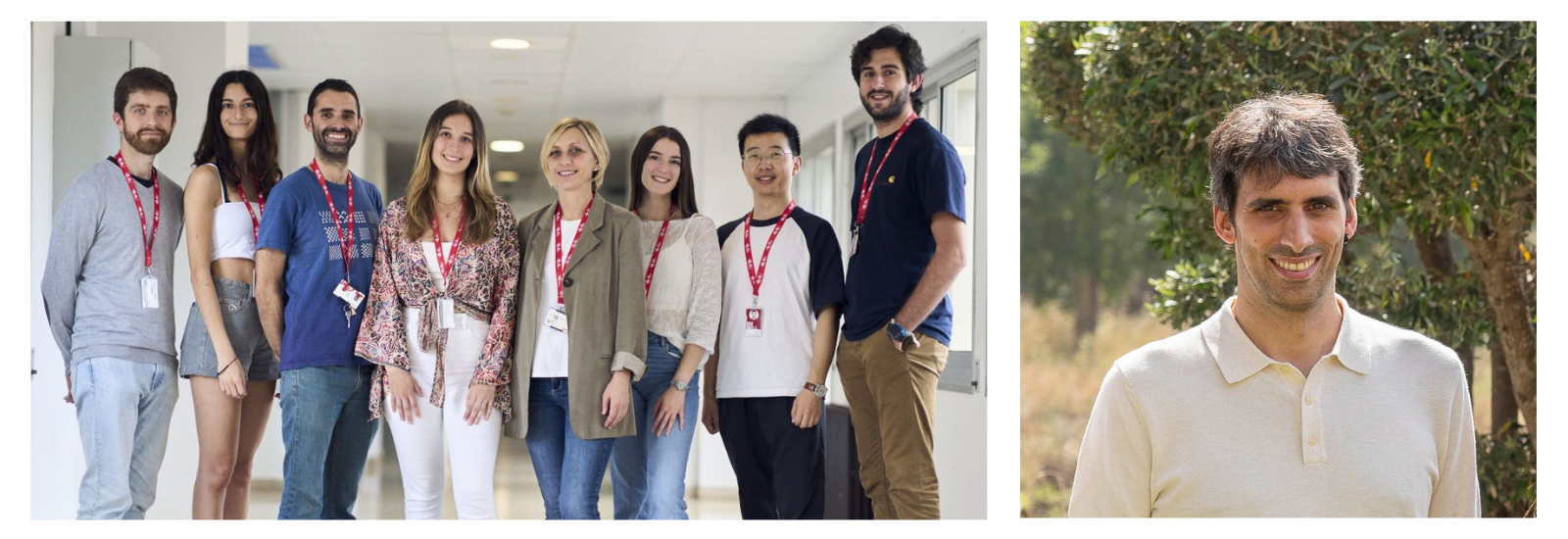A new cellular model reveals which mutations drive progression to myelodysplastic syndrome and leukemia in patients with GATA2 deficiency

A recently published study in Nature Communications, led by a group from the Bellvitge Biomedical Research Institute (IDIBELL) with the participation of the Germans Trias i Pujol Research Institute (IGTP), has developed the first humanised model based on induced pluripotent stem cells (iPSCs) to investigate why some patients with GATA2 deficiency progress to severe haematological diseases such as myelodysplastic syndrome (MDS) or acute myeloid leukaemia (AML). Oskar Marín Béjar, researcher of the Oncology Translational Research (OTR) group at IGTP and corresponding co-author of the study, contributed to the experimental design and molecular analysis of the model, which identifies SETBP1 as a key driver in the evolution of this rare genetic disorder.
The research allows for the accurate reproduction of the biological changes observed in patients and provides a relevant experimental tool to better understand disease progression and explore new therapeutic strategies.
Identifying the molecular tipping point
The model confirms that the germline mutation in GATA2 is the first event in the disease, but it is not sufficient to trigger malignancy. Progression to myelodysplastic syndrome or leukaemia depends on the acquisition of additional mutations.
The study shows that two common mutations in patients-SETBP1 (gain of function) and ASXL1 (loss of function)-impair haematopoietic differentiation and significantly reduce the regenerative capacity of myeloid progenitor cells.
"This model allows us to study in detail how secondary mutations drive tumour progression and gives us the opportunity to explore potential therapeutic targets beyond haematopoietic transplantation", explains Oskar Marín Béjar, emerging researcher at IGTP.
According to the data generated, SETBP1 emerges as a predominant molecular driver in the progression towards premalignant states. The main findings include:
- Development of the first humanised iPSC-based model to study the progression of GATA2 deficiency.
- The germline GATA2 mutation alone does not induce a myelodysplastic phenotype, confirming the need for additional genetic events.
- Mechanisms explaining the molecular synergy between mutations in advanced stages of the disease were identified.
- The SETBP1-associated pathway emerges as a potential therapeutic target for future investigation.
In addition to the conceptualisation of the project, IGTP researcher Oskar Marín Béjar has contributed through competitive international funding, scGATA2track, supported by a Marie Skłodowska-Curie (MSCA-IF) fellowship (101029927) and a Kick-off grant from the European Hematology Association (EHA).
The study had a multidisciplinary component, integrating basic, translational, and clinical research with laboratories from IDIBELL, IGTP, the Institut de Recerca Sant Joan de Déu (IRSJD), the Hospital del Mar Research Institute, and the Josep Carreras Institute, among other national and international centres.
Towards new therapeutic approaches
Currently, stem cell transplantation is the only curative treatment available for these patients. The developed model opens the possibility of evaluating new therapeutic alternatives and advancing precision medicine, which will allow the design of tailored therapeutic combinations for each patient.
Reference
Joan Pera, Damia Romero-Moya, Eric Torralba-Sales, Rebecca Andersson, Violeta García-Hernández, Maria Magallon-Mosella, Maximiliano Distefano, Clara Berenguer Balaguer, Julio Castaño, Francesca De Giorgio, Zhichao Qiu, Arnau Iglesias, Paulina Spurk, Sara Montserrat-Vazquez, Lorenzo Pasquali, Zhuobin Liang, Albert Català, M. Carolina Florian, Marcin W. Wlodarski, Anna Bigas, Oskar Marin-Bejar* & Alessandra Giorgetti*. Human iPSCs-based modeling unveils SETBP1 as a driver of chromatin rewiring in GATA2 deficiency. Nat Commun 16, 10035 (2025). DOI: https://doi.org/10.1038/s41467-025-65806-9
